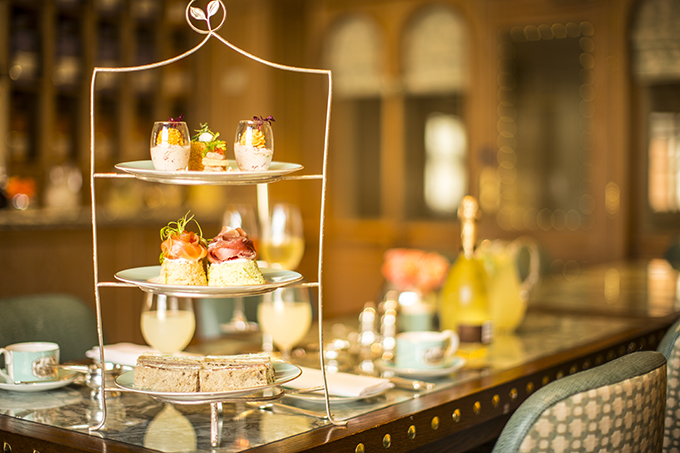As previous holder Rigby & Peller is stripped of its status, we look back at the history of Royal Warrants, which are held by suppliers to the Royal Family
Ever since King Henry II gave a Royal Charter to the Weavers’ Company in 1155 for clothes and castle hangings, and William Caxton became King’s Printer to Edward IV in 1476, Britain’s tradesmen and crafts people have aspired to serve Sovereign and Court.
Today, there are around 800 Royal Warrant Holders – a mark of prestige of people who provide goods or services to the Royal Family. Royal Warrants can be granted by three members of the Royal Family: Her Majesty The Queen, HRH the Duke of Edinburgh (Prince Philip), and HRH The Prince of Wales (Prince Charles).
The Royal Warrant is a piece of paper that permits businesses to display the Royal Arms and the legend ‘By Appointment’ on the outside of shops and factories, bills, stationery – and sometimes on the product itself – because, if it’s fit for a royal, then it must surely be the very best available.
Not everyone can apply. The applicant must have provided goods or services on request to the Royal Household for a minimum of five years before they are considered by the Grantor. In the Prince of Wales’s case, they also have to “demonstrate that they have a workable environmental policy.” The Lord Chamberlain then advises on the final decision. The Grantee – a named person, not the company – is personally responsible for the quality of his product.
Everything from crowns to cutlery, confectionery to candles, silverware to silks, furniture to frying pans have appeared on Sovereigns’ shopping lists over the centuries, but some of the orders have changed over time. Queen Mary Tudor’s Royal Skinner – fur dealer and tailor – made a spectacular outfit for her Fool (court jester) William Somer. The description begins: ”A Turquey Coate with vi (sic) blewe coneyes (rabbits) and gresseled (probably ostrich feather) clowdes”. Unlike Henry VIII, the present Queen doesn’t have a supplier of “Swannes and Cranes, price the piece two shillings” nor we imagine does she give her Purveyor of Fish “£10 a year for ‘entertainment’ plus £22.11s.8d. for losses and necessaries” like Elizabeth I.
In the 18th century there was a Royal Rat-catcher and Mole-taker, but Andrew Cooke, the incumbent Royal “Bug-taker” seems to have fallen out of favour despite having “cured 16,000 beds with great applause”.
And it wasn’t until William IV’s reign that tradesmen were allowed to use the Royal Arms in public. Some of the king’s holders’ descendants still serve the Royal Household: Wilkinson Sword is still Her Majesty’s Sword Cutlers.
Aside from queens themselves, women have perhaps unfairly played a small part in the history of Royal Warrants. It wasn’t until 1700 that King William and Queen Mary saw fit to grant one to Anne Bridge, their Purveyor of Oysters. Some of the names are very quaint: in 1830 Robert Rogg was ‘Chinaman’ –Supplier of Tableware and the glamorous-sounding Plumassier was the Supplier of Feathers.
Paper-hangers, pen-cutters and globe-makers figure prominently, and after Queen Victoria came to the throne in 1837, over 2,000 shops, craftspeople and factories – including Twinings tea merchants and Fortnum and Mason – received the Royal accolade. Victoria also revived the Oath for Warrant Holders, as used in Charles II’s time, which was taken on the Bible, except by Jews who swore on the Old Testament and Quakers who affirmed, “I hereby solemnly swear that I will be a true and loyal servant to our sovereign Lady Victoria.”
The Royal Tradesmen themselves were justifiably proud of their accolade and decided in 1840 to form an Association “for the celebration of Her Majesty’s birthday in May”. The first meeting was held in The Freemasons Tavern, Great Queen Street in the City of London and the original minute book with its spidery writing is kept in The Royal Warrant Holders’ Association headquarters in London’s Buckingham Place.
Being Victorian men, the members immediately formed a dining club. They paid one guinea a year “with attendance right” to the dinner. Sons were allowed if fathers were indisposed, but “if a lady or firm of ladies” held a Royal appointment, they “could appoint a Gentleman to represent them”. The first year there were 25 at the dinner, the next 80 and today members and guests total well over 1,500.
Queen Victoria was so impressed she sent venison as one of the seven courses. Word got around and by 1896 the association was keeping a firm eye out for people pretending to be Royal Tradesmen.
The Royal Warrant Holders’ Assocation (known as the Royal Tradesmen in Scotland) still holds an annual banquet. Its members, as in the past often come from the areas around the royal residences: Buckingham Palace, Windsor Castle, Holyroodhouse, and Sandringham.
Unless it’s obvious – like John Lobb Bootmaker and Wolsey hosiery – members are not allowed to boast about which products the royals use, something that Rigby & Peller have just learned, having been stripped of their Royal Warrant after spilling the beans in a tell-all book.






 © 2024
© 2024